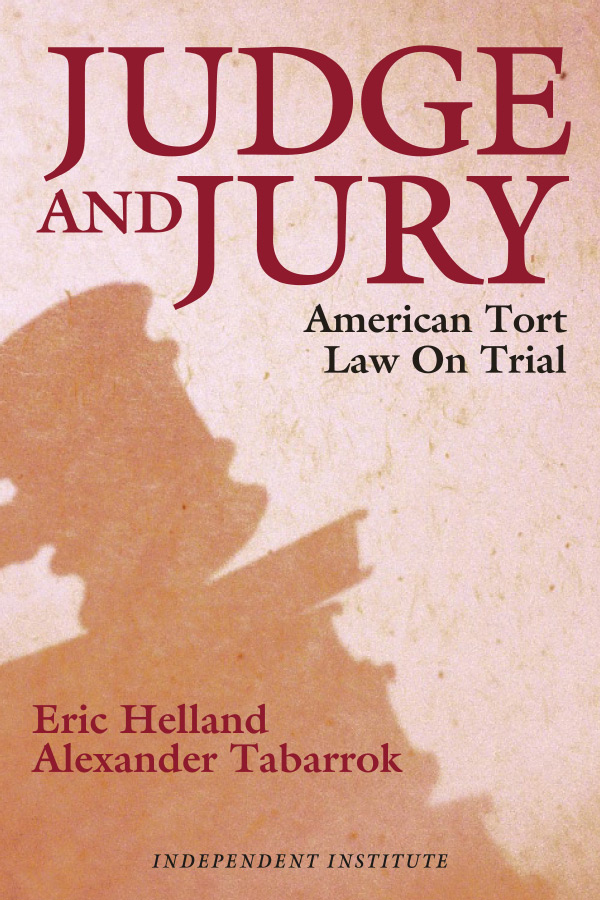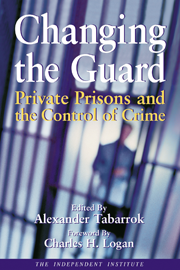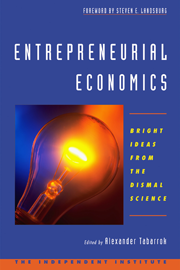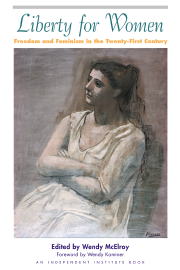Pediatricians and their patients are pleading with Congress to reauthorize a provision of the Food and Drug Administration Modernization Act (FDAMA) intended to encourage study of the effects of drugs on children. Under the provision, known as Section 111, pharmaceutical firms gain six months of additional monopoly power if they conduct pediatric studies on new or currently marketed drugs that are still under some exclusivity provision such as patent protection. Section 111 is set to expire this January, after which generic drug makers and other pharmaceutical manufacturers will be able to bring competing products to market sooner than they can now.
Monopolies are supposed to be bad and price competition good. So why are pediatricians and their patients pleading to give more monopoly power to drug manufacturers? Are some monopolies good for children? And are they good for the rest of us?
ORPHAN DRUG ACT
The pediatric exclusivity provisions of the FDAMA are modeled on similar provisions established in the 1983 Orphan Drug Act. That act was intended to provide an incentive for pharmaceutical companies to develop drugs for rare diseases.
Since the expansion of the role of the Food and Drug Administration (FDA) in evaluating new drugs under the Kefauver-Harris Bill of 1962, the cost and time necessary to bring such drugs to market have risen dramatically. By 1983, the research, testing, and development of a new drug could take up to 20 years, seven of which could be spent on the FDA ’s approval of the New Drug Application. In addition, the total cost of bringing a new drug to market had risen to hundreds of millions of dollars.
Studies of the FDA showed that the increase in cost and time to market resulted in substantial drug lag and drug loss. New and beneficial drugs were taking longer to reach the market, thus resulting in the deaths of many people who would have lived had the approval process been more expeditious. What is more, many drugs were simply no longer being created because the costs exceeded any potential revenues.
Because the costs of obtaining FDA approval were the same regardless of whether a drug under development was intended to treat an illness afflicting 20,000 patients or two million, FDA regulation has had especially negative consequences on drugs intended for small markets. To counter that disincentive, the Orphan Drug Act was enacted in an effort to reduce drug loss in the area of rare diseases—“rare” defined as fewer than 200,000 cases in the United States at the time of certification. The Orphan Drug Act gave tax breaks, subsidies, and (most importantly) seven years of market exclusivity to sponsors of drugs for rare diseases.
Exclusivity
Rather than lowering the cost of producing new drugs, the Orphan Drug Act increased the benefits by giving monopoly rights to sponsors. The price of monopoly, however, is higher drug prices for consumers and worse medical care when the higher prices prevent consumers from purchasing the drugs that are best able to treat their illnesses. Moreover, the seven years of exclusivity granted under the act are more generous than a patent. A patent protects against competition from a drug with the same or very similar chemical structure, but market exclusivity is more concerned with offering protection against competition from any drug with a similar effect, even if the drug has a different chemical makeup. Thus, with some exceptions, the FDA has barred firms from marketing different drugs that treat the same disease as a drug that the FDA has previously granted exclusivity under the act.
True orphans?
Some observers have claimed that the Orphan Drug Act has stimulated much greater production of drugs to treat rare diseases. As evidence, they point to the hundreds of drugs that have been granted orphan status and received FDA approval. The number of “orphan drugs,” however, is a misleading measure of the success of the act because of the way “rare” is defined. In fact, the act has granted exclusivity to numerous drugs that would have been produced without the act.
Millions of Americans, for example, suffer from cancer, so cancer is not rare. But a drug used to treat several variants of cancer can be granted orphan status for any variant with less than 200,000 patients. Thus, a drug used to treat ovarian and bladder cancer could be an orphan in each category even though the total population served by the drug would be well over 200,000. Ovarian and bladder cancer patients may end up paying monopoly prices for seven additional years even though their drug would have been produced without the grant of additional monopoly rights.
Also, the market for a drug may be divided into preventative use and treatment use, and if either of those categories is below 200,000, orphan status is granted. Moreover, the same drug can be an orphan for more than one disease. Given all of the ways that orphan status can be granted, it is clear that the Orphan Drug Act has led to higher-than-necessary prices for many “non-orphan” drugs.
Exclusivity and prices
Although exclusivity is granted only for the uses that qualify a drug as an orphan, it is important to note that an increase in price will occur for all users—including those who use it to treat more common illnesses. That is because it is difficult to set different prices for different diseases, disease variants, or disease stages. Even if a drug firm obtains exclusivity on only one disease variant, competition on all other variants may be reduced.
For example, a drug firm may receive monopoly rights under the act for a drug designed to treat ovarian cancer, which has a patient population of 150,000 patients. But the firm may not receive exclusivity rights for the treatment of bladder cancer because the 250,000 potential patients who suffer from that disease exceed the limit for orphan status. A second firm considering entering the market may be dissuaded from doing so because exclusivity has reduced the potential market by nearly 40 percent, thus substantially reducing the incentive to invest. It is possible that, after taking such effects into account, the Orphan Drug Act may actually reduce the incentive to invest in new drug development.
Orphan status
When originally enacted, the standard for orphan status under the act was that there is “no reasonable expectation that the costs of development will be recouped from U.S. sales.” Because worldwide sales often exceed U.S. sales, even that standard could grant exclusivity, subsidies, and tax breaks to drugs that would be profitable without such benefits.
To prove that there was not a reasonable expectation of recouping cost, pharmaceutical firms were supposed to submit financial data to the Internal Revenue Service. The pharmaceutical industry disliked that provision, however, and lobbied to have the requirement weakened. In 1984, the standard for orphan status was weakened to having fewer than 200,000 potential U.S. patients at the time of the request for designation of orphan status. The act also included a rarely invoked provision that grants orphan status when the drug manufacturer can prove that it cannot recoup development costs from U.S. sales within seven years of the drug’s introduction.
In the early years of AIDS, when the disease affected relatively few people, the revised standard allowed many AIDS drugs to gain orphan status despite the fact that the market for the drugs was expected to grow rapidly. azt, for example, was designated an orphan drug despite the fact that it generated billions of dollars in sales. Initially, Congress also restricted the exclusivity to drugs that could not be patented; that restriction was dropped in 1985. Thus, over time, the act has become significantly more beneficial to the established U.S. drug manufacturers.
Two wrongs
The increase in the incentive to produce new drugs may outweigh the increase in prices caused by the Orphan Drug Act, but no major cost-benefit analysis has evaluated the policy. When patents and other exclusivity provisions end, generic drug producers typically enter the market at prices 35 percent lower than brand name prices and continue to lower prices for several years after entry. Given the great cost savings from generic drugs, it could well be the case that consumers have paid higher prices for longer periods of time in return for only a small increase in the number of drugs used to treat rare diseases.
The Orphan Drug Act is an attempt to redress one wrong—drug loss due to FDAdelay and over-regulation—with another—monopoly prices. In a second-best world, two wrongs can make a right. But the way the act has been implemented suggests that higher prices are being created without suitable return. It would be better to address the problems of drug loss and drug lag by reforming the FDA.
PEDIATRIC EXCLUSIVITY
The pediatric exclusivity provisions of Section 111 have a rationale that is analogous to the orphan drug provisions: to remedy the lack of pediatric labeling for most drugs. Pharmaceutical firms have been reluctant to perform clinical trials on children, not simply because the pediatric market is often small relative to the adult market (although that undoubtedly plays a role), but also because of the difficulty of obtaining informed consent. Phase I clinical trials, for example, are meant to determine a drug’s basic properties and safety profile in humans. Studies in that phase are conducted on healthy individuals who typically are paid to participate in the trial. Substantial ethical and legal concerns are raised by the participation of healthy children in such trials, especially when the children are not old enough to give informed consent and when payment may be made to the child’s parents.
Exclusivity’s extent
To overcome those concerns, Section 111 offers pharmaceutical firms six months of market exclusivity on top of any patent rights or other monopoly rights granted under the Drug Price Competition and Patent Term Restoration (Hatch-Waxman) Act or the Orphan Drug Act. Grants of exclusivity under Section 111 cover not just the pediatric formulation but also the adult version of the drug. In fact, the additional protection extends to the active moiety of the drug, meaning that it covers all forms of the drug (e.g., cream, spray, oral tablet) used by adults and children, even though the test may have been limited to just one form of the drug.
Section 111 does place some limits on the awarding of exclusivity. Pediatric information is not useful for all drugs (e.g., pediatric dosing information would not be useful on a drug intended to treat Alzheimer’s), thus only those drugs for which the FDA believes pediatric information would be worthwhile are eligible for exclusivity. In addition, because the FDA must approve all new drugs, the agency can maintain a drug’s monopoly by refusing to approve competitors. But the FDA has no power to create a monopoly once a drug has gone off-patent and competition has been established. Thus, there are no incentives under Section 111 to conduct pediatric studies for off-patent drugs.
In return for the extra six months of market exclusivity, the drug company must conduct at least one clinical investigation with children of the appropriate age group. If a drug has been approved for adults only, for example, the testing might involve children 12-18 years of age, but if the drug has already been approved for 2-year-olds and up, the study group may be infants aged 6 months to 2 years of age. The study may be as limited as a Phase Itype study that consists of short-term clinical tests of the drug on 20 to 80 healthy volunteers to determine basic pharmacological and toxicological information. The FDA may request more extensive studies, but there is no requirement that the studies demonstrate either safety or efficacy in children, nor need they be sufficient to establish pediatric labeling. Typically, the cost of such studies ranges from $200,000 to $3 million.
Who is benefiting?
To date, some 25 drugs have received pediatric exclusivity, including Fluoxetine, better known as Prozac. Prozac is Eli Lilly’s blockbuster drug, with sales of some $2.21 billion a year. The entry of a generic drug manufacturer into a monopolized market typically cuts brand name sales by approximately 40-50 percent. In a competitive market, generic drug manufacturers can, and do, profitably sell generics at prices 60 percent less than the prices of brand-name drugs. An additional six months of exclusivity for Prozac was thus worth about $1.1 billion in revenue to Eli Lilly. Using the generic price as an upper bound on marginal cost, that suggests a minimum of $660 million in extra Lilly profits.
Eli Lilly won its extension of monopoly power by submitting to the FDA one study that had been completed two years before the pediatric exclusivity law was even passed and three other studies that were already underway at the time of the law’s passage. Thus, the public paid over half–a –billion dollars to the drug maker in return for data that was being compiled before the law went into effect.
Pepcid, Zantac, Ibuprofen, and Claritin are four other blockbuster drugs that have received six months of additional monopoly protection under the pediatric exclusivity law. Claritin, for example, had revenues in 1999 of $2.67 billion. Assuming the typical effect on prices that usually occurs following the entry of a generic competitor, the sixmonth extension of monopoly rights was worth some $1.33 billion in revenue, or approximately $800 million dollars in profit, for drug maker Schering-Plough.
The FDA recently estimated that drug manufactures will earn an additional $30 billion over the next 20 years as some 100 new drugs have their monopoly status extended. Given the costs of the pediatric studies, it is evident that consumers are greatly overpaying for such studies.
Usefulness?
Because of the lack of pediatric labeling, pediatric drugs are often prescribed “off-label” (i.e. for a non- FDA-approved use). That may seem worrisome, but off-label prescribing is common in all areas of medicine. Most hospital patients, for example, receive at least one drug off-label. Doctors prescribe off-label, not because they lack information, but because they discover new uses for old drugs more quickly than the FDA can approve such uses. Doctors and clinical researchers are continually evaluating academic studies and patient experience and, as they do, the standard of care evolves. Therefore, pediatricians do not prescribe off-label drugs in a vacuum, but rather in response to an evolving body of developed knowledge. Pediatric studies do sometimes challenge the body of developed wisdom and, for that reason, such studies can have great value. But the additional information conveyed by the typical pediatric study should not be exaggerated.
Pediatric exclusivity is a poorly targeted program. Rather than creating incentives to discover information about the drugs most valuable to children, it encourages pediatric studies on the drugs most valuable to adults. A sixmonth period of additional market protection is worth much more for a blockbuster drug that sells primarily to adults than it is for a drug with lower sales, even if the latter drug is more useful to children. As a result, drug manufacturers have rushed to perform pediatric studies on blockbusters like Prozac, Zantac, and Claritin, despite the fact that such drugs are not always the most useful to children. And pediatric exclusivity creates no incentives to conduct pediatric studies on off-patent drugs.
Section 111 raises questions about ethics as well as efficiency. In essence, pediatric exclusivity is a cross-subsidy from sick adults to sick children, just as the Orphan Drug Act is a cross-subsidy from people who are sick with common diseases to people who are sick with uncommon (“rare”) diseases. Although no one doubts that it is desirable to have more orphan drugs and more pediatric information, it is not obvious why sick adults and sick people with common diseases should bear the burden of such policies.
CONCLUSION
If Congress believes that the market does not provide enough pediatric labeling information, then both efficiency and equity would be better served if the federal government funded pediatric studies from general revenue. Congress, for example, could instruct the National Institutes of Health to perform such research, or buy the needed studies from the private sector through a competitive bidding process.
Pediatric exclusivity forces drug consumers to pay a hidden tax of billions of dollars in the form of higher drug prices. Most of that tax flows to the coffers of drug manufacturers and is not being used to pay for important research on pediatric drug uses.
References
American Health Care, edited by R. D. Feldman. Oakland, Calif.: The Independent Institute, 2000.
“Assessing the FDA Via the Anomaly of Off-Label Drug Prescribing,” by Alexander Tabarrok. The Independent Review, Vol. 5, No. 1 (2000).
“Child Play: Pharmaceutical Firms Win Big on Plan to Test Adult Drugs on Kids,” by Rachel Zimmerman. The Wall Street Journal, Feb. 5, 2001, p. A1.
“Longer Patents for Increased Generic Competition in the U.S.: The Waxman-Hatch Act After One Decade,” by Henry G. Grabowski and John M. Vernon. PharmacoEconomics, Vol. 10, Supplement 2 (1996).
“The Orphan Drug Act: Provisions and Considerations,” by Carson R. Reider. Drug Information Journal, Vol. 34 (2000).
The Pediatric Exclusivity Provision, January 2001 Status Report to Congress, published by the U.S. Food and Drug Administration. Washington, D.C.: U.S. FDA, 2001.
“Pediatric Testing of Prescription Drugs: The Food and Drug Administration’s Carrot and Stick for the Pharmaceutical Industry,” by K.R. Karst. American University Law Review, Vol. 49 (2000).
“Rare Diseases, Drug Development, and aids: The Impact of the Orphan Drug Act,” by P.S. Arno, K. Bonuck, and M. Davis. The Milbank Quarterly, Vol. 73, No. 2 (1995).
The Regulation of Pharmaceuticals: Balancing the Benefits and Risks, by Henry G. Grabowski and John M. Vernon. Washington D.C.: American Enterprise Institute, 1983.












